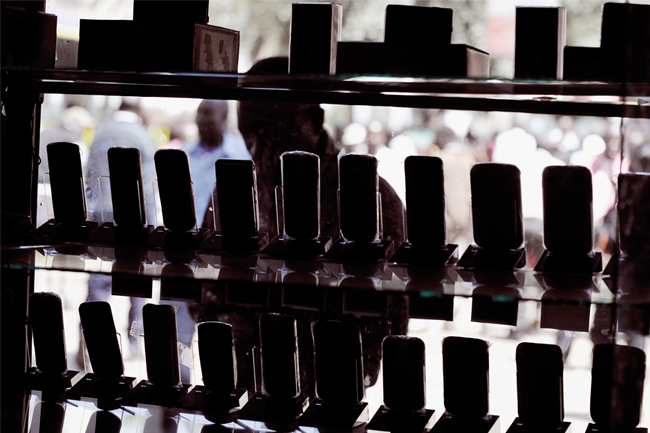Your package has finally arrived. It’s the Samsung Galaxy S5, brand new and you got it for a bargain. But something doesn’t look quite right… Maybe the phone’s home button is placed a little further than where it’s supposed to be, or the brand’s logo is slightly raised, as if it were a sticker. Like so many other unsuspecting consumers, chances are you’ve just purchased a fake smartphone.
Scammers have become masters at fooling the public into buying knock-off, counterfeit devices, and while some people will still consider it a bargain either way, consumers who choose to buy a smartphone from unauthorised dealers place themselves at risk of losing out.
Not only that, there is also a physical danger attached to using fake handsets, according to Liron Segev, tech analyst and founder of two businesses in the field of mobile application and development.
‘The devices are not subject to quality control or tested for electrical safety standards, and offer no warranty protection to consumers,’ he says.
‘There is no assurance of the quality of the device nor its battery. Therefore you run the real risk of holding a device to your head that could literally explode.’
In the end, however, the trickery damages the real manufacturers. ‘These phones are dressed up to look exactly like the genuine branded phones and sold with the sole aim of duping the public into parting with their money,’ says Segev.
‘When these fake devices fail, the unsuspecting purchaser is very quick to jump onto social media and aim their frustration at the brand, which causes damage to the company’s reputation, even though they are not at fault.’
This is not a new thing. Counterfeit electronic devices have been making their way onto African soil for years. Kenya has had an especially tough time with these devices and was one of the first East African nations to crack down on fake mobile phones.
While some people will still consider it a bargain either way, consumers who choose to buy a smartphone from unauthorised dealers place themselves at risk of losing out
In 2012, when the country had around 30 million mobile subscriptions, its Communications Commission put the number of users who had counterfeit phones at approximately 2.3 million. This, as industry estimates suggest, equates to around US$35 million a year being lost, in the form of missed import duty and VAT income due to counterfeits across the various sectors.
In an online This is Africa report, Abdulla Hasayen, Nokia brand protection manager for India, the Middle East and Africa, says: ‘Across East Africa, the availability – and use – of counterfeit mobile phones is widespread, and has reached the extent where potential mobile phone buyers cannot immediately tell whether they’re purchasing a genuine or imitation handset.’
He adds that ‘the region could be losing up to US$200 million to counterfeit products, threatening the spirit of East African Community’s economic growth as a trading bloc’.
In September 2012, Kenya took steps to counter this – its Communications Commission performed a nationwide switch-off of all counterfeit mobile phones by using the International Mobile Equipment number. Subscribers were given time beforehand to replace their phones, but mobile networks were forbidden to activate any fake devices from that point onwards.
Nokia and Samsung also did their bit to assist in the disposal of these knock-off phones. With the help of a local recycling company, they supplied 100 recycling points across the country for citizens to safely dispose of their counterfeits. At the same time, according to IT Web Africa, Samsung ran its Give up the Fake campaign, which encouraged subscribers to hand in their fake devices in return for a genuine mobile phone at a starting price of US$16. According to the International Telecommunication Union, Kenya has since managed to phase out nearly 2 million counterfeit phones.
Meanwhile, Hasayen says there has been a drop in market share. ‘To date, an estimated 67% of Kenyans now have access to mobile phones, while it is also estimated that the counterfeit market share dropped by almost 6% as a result of this bold move.’
However, that hasn’t stopped counterfeiters completely. Last November, the Kenya Anti-Counterfeit Agency unearthed a massive mobile-phone syndicate – around 1 000 fake Samsung devices worth KES40 million were seized, resulting in three arrests.
Shortly after Kenya took action, Uganda followed suit. With roughly 30% of the country’s 17 million mobile phones being cheap knock-offs, the Uganda Communications Commission prompted a region-wide clampdown, similar to Kenya.
MTN Uganda assisted by warning subscribers of the impending counterfeit-phone shutdown on social media sites, including Facebook, notifying them that they had until March 2013 to register their SIM cards with the regulator. Invalid device were disconnected between July and December of that year.
While Nigeria’s strategy in combating counterfeit mobile phones was akin to that of Uganda and Kenya’s, the Standards Organisation of Nigeria (SON) says a constant flow of fake ICT products (including phones) continues to infiltrate the country’s market.
The West African nation currently has a GSM subscriber base of nearly 127 million – 10% of which are using knock-off devices, according to Joseph Odumodu, director-general of SON. He adds that in 2013 alone, more than NGN5 billion was spent on the importation of substandard mobile phones.
Odumodu argues that once more countries disconnect these illicit phones, the people behind the scourge will continue moving to regions that have yet to adopt a solution, hence the need to address the situation on a global scale.
Rwanda, Tanzania and Zambia and have all initiated the same procedure – the first steps in providing a continent-wide solution. It’s relatively early days yet and, while the results so far have been mixed, it marks the beginning of a long-term clampdown.
By Melissa Le Roux
Image: Gallo Images/AFP/Simon Maina


